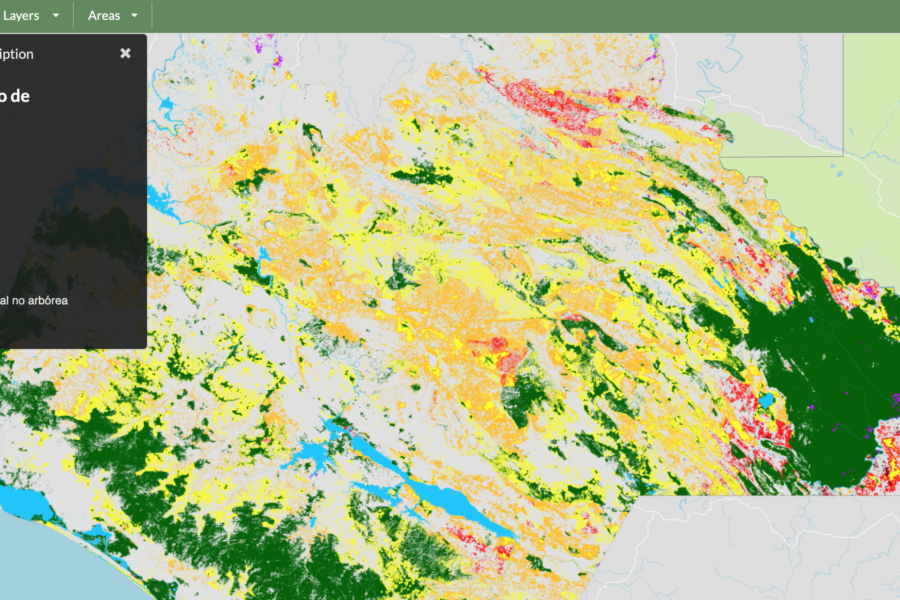REDD+ Remains Essential
Emissions of CO2 from the loss and depletion of forests, mainly in the tropics, continue to be an important driver of climate change. In terms of scale, these land use and land use change emissions are roughly equivalent to fossil fuel emissions from the EU.
Reducing Emissions from Deforestation and Degradation (REDD) is therefore essential for stabilising atmospheric CO2; and the restoration of previously degraded forests (the “+” in REDD+) represents the greatest opportunity to achieve enough removals of carbon from the atmosphere to give a chance for a “Net Zero” economy by the second half of this century.
A Net Zero balance between the economy and the atmosphere could be achieved by the the following combination:
- Reducing fossil fuel emissions to below 10% of their current levels (a 90% reduction)
- Stopping all emissions from deforestation, degradation and drainage of peatlands
- Restoration of about half the forests and other ecosystems damaged over the past 50 years.

So, while REDD+ cannot be a substitute for massive reductions in fossil fuel emissions, it is an absolutely essential component of any viable climate strategy.
Finally, the other aspects of natural forests – their biodiversity, their role in regional water cycles, their cultural and livelihood functions make REDD+ a compelling objective from a broader sustainability standpoint.
REDD+ is not just about money but finance is needed
Some critics of REDD+ narratives assert that policies and politics are what drives land use change and that improvements to laws governing land use, land titles, forest management, agricultural development and infrastructure are what is required, rather than money.
The NFS view is that that more forest-favourable policies are necessary but probably not sufficient. While some countries have made progress on policies to protect natural forests, there remain tensions and conflicts with powerful economic drivers, particularly around the expansion and intensification of agriculture. These issues require a commitment of significant financial and human resources.
Most of the places where forest loss and degradation occurs are at the margins of central government controls. The groups and organisations dealing with these pressures – local forestry departments, municipal authorities, indigenous organisations and others, are poorly resourced and unable to take on or address the wide range of pressures on natural ecosystems.
Central governments setting targets to eliminate deforestation is laudable but not credible without the necessary capabilities being applied where they are needed.
”Central governments setting targets to eliminate deforestation is laudable but not credible without the necessary capabilities being applied where they are needed.
REDD+ Cannot be Financed by Aid Alone
The majority of REDD+ finance consists of development aid from six or seven major donors (USA, Norway, UK, Germany, Japan and Switzerland). Most of this finance is channelled through a variety of bilateral programs or multilateral institutions, such as the World Bank.
But donors are beset by two problems – the quantum of resource available for forest and land use programs and the quality of those programs:
- The quantity of donor finance is limited by budgetary constraints on countries, particularly post-Covid, and competing calls on those budgets for emergencies ranging from wars and extreme weather events;
- The effectiveness and efficiency of donor funded programs is often poor, with large portions of resource used up by consultants, central administration and in discussion groups. Programs generally run for just a few years and often end just as they are starting to function properly.
Most aid agencies recognise the limitations of government funded solutions and understand the need for working alongside private initiatives. The challenge is how to make these public – private partnerships work effectively.
”...the application of private finance alongside donor resources and more enlightened land use policies seems to be the best chance of achieving the necessary REDD+ outcomes.
Private Carbon Finance is the most viable supplement to Development Assistance for Forests
The adoption of Net Zero targets by businesses and their willingness to voluntarily pay, to some degree, for external reductions and removals opens the potential for financial transactions in the REDD+ space.
The scale of finance currently being raised through this channel is tiny compared with the scale of the “need / challenge / opportunity / problem” (depending on how you look at it), but the vibe in participating businesses indicates that if we can provide credible, high integrity pathways to generate certifiable removals and reductions then a sizeable chunk of resources could be allocated.
Despite the issues raised by journalists and critical commentators, the application of private finance alongside donor resources and more enlightened land use policies seems to be the best chance of achieving the necessary REDD+ outcomes.
Verra has Structural Problems with REDD+
The processes used by Verra to register projects and issue credits largely mirror those of the famously bureaucratic Clean Development Mechanism (the CDM), set up under the Kyoto Protocol, allowing projects in developing countries to generate credits that were intended to be purchased by industrialised countries to meet their Kyoto targets. The story of the CDM’s failure is an important lesson to reflect upon.
Structural problems with Verra arise from its ambition to cover a comprehensive range of greenhouse gas mitigation technologies within a single system; – everything from coal mine methane abatement and fuel efficient cookstoves, through to biochar, afforestation and REDD projects. This has led to a proliferation of requirements, recommendations, complex methodologies and calculation modules that often require (or allow) considerable interpretation by project developers and verifiers.
In the context of REDD+, the reference levels (baselines) against which project performance is measured can be set in a number of ways. Projects must select from a range of options and are responsible for gathering data, analysis and calculations in addition to undertaking the fundamental work needed to engage with communities and other stakeholders to address pressures on the forest.
The resulting system is expensive and time consuming for project developers, is complex to validate and verify and tends to reward projects for overstating the risks to forests in their areas.

NFS is working on Solutions
The NFS has been working on solutions to the REDD+ problem for the past ten years.
These include:
- The use of independently derived, peer reviewed maps of forest at risk, to set project reference levels for limited periods based on recent trends in land use change across the regions where projects are active;
- A requirement to work in partnership with relevant jurisdictions to ensure alignment with national programs and legal frameworks;
- The use of digital infrastructure to check calculations and to provide transparency on project management areas.



